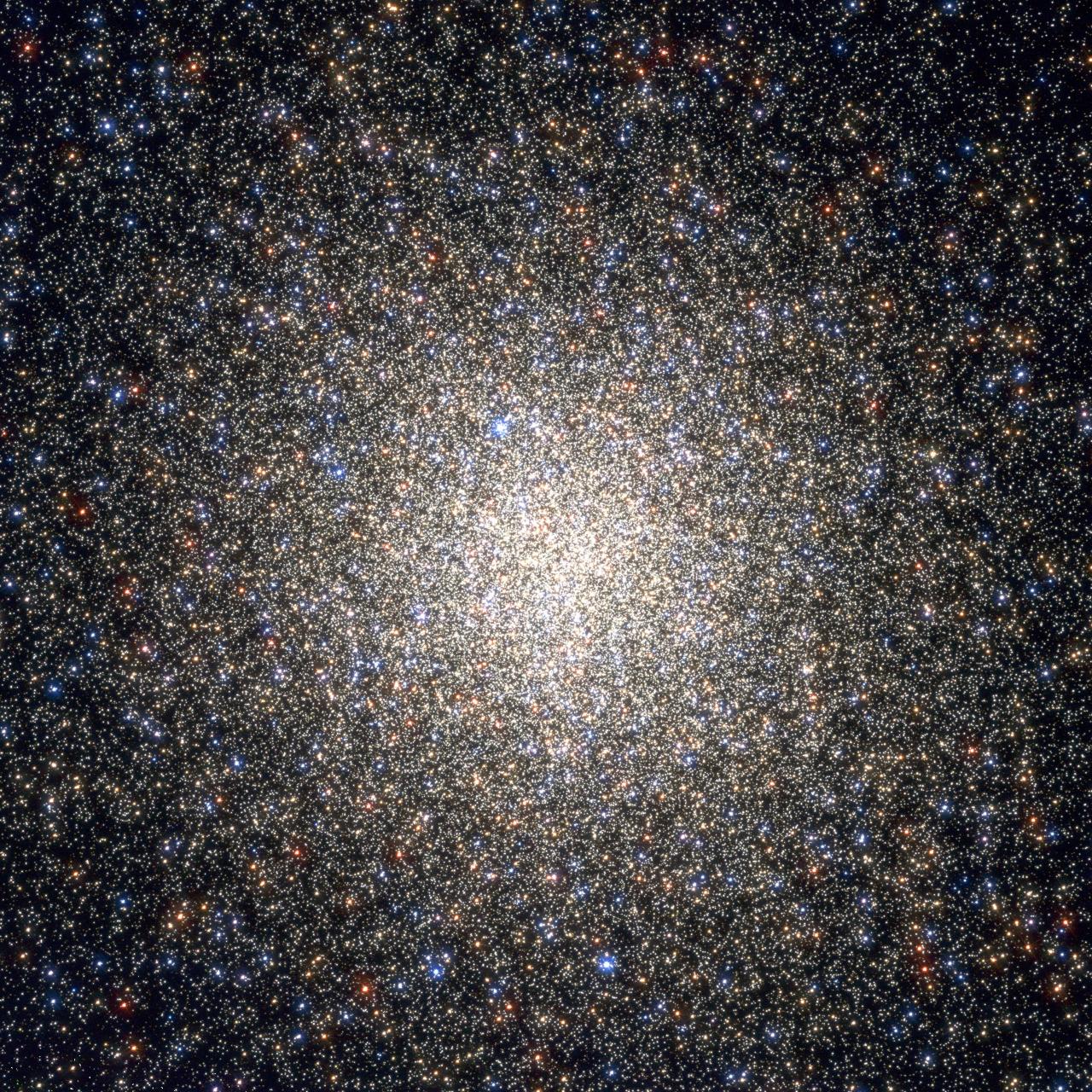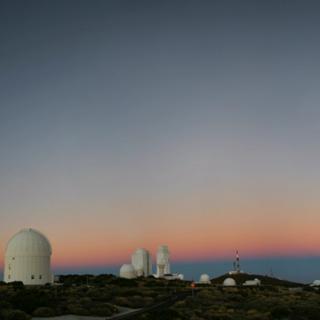Subvenciones relacionadas:
General
El objetivo general del Proyecto es el estudio de la estructura, historia evolutiva y proceso de formación de galaxias a través de sus poblaciones estelares resueltas, tanto a partir de fotometría como espectroscopia. El proyecto puede dividirse en cuatro líneas principales:
I. Historia de formación estelar en el Grupo Local.
El objetivo de esta línea es la caracterización de la estructura espacio-temporal de las galaxias del Grupo Local mediante la observación de sus estrellas individuales. Un objetivo fundamental es la determinación de las historias de la formación estelar (HFE) detalladas y extendidas a toda la historia evolutiva de la galaxia con objeto de determinar el grado de importancia que los procesos cosmológicos (tales como la reionización o self-shielding) o locales (barrido de gas por supernovas, fuerzas de marea, migración estelar) tuvieron en su formación.
II. Multipoblaciones estelares en cúmulos globulares.
De forma contraria al paradigma clásico, hay evidencias de que los cúmulos globulares (CG) albergan más de una población estelar de diferente composición química. Observaciones fotométricas de los CG usando el HST muestran fuertes evidencias de múltiples secuencias principales en el DCM. El objetivo de la línea es caracterizar dichas multipoblaciones en CG.
III. Formación y estructura de la Vía Láctea.
Esta línea tiene como eje principal el estudio de la Vía Láctea a través de los datos que proporcionará GAIA (espacio) y el survey ESO-VVV . Este tipo de datos van a dar una oportunidad única de conocer la historia de formación estelar en el disco y en el bulbo galáctico. En este marco, es necesario adecuar las herramientas desarrolladas por nuestro grupo para el análisis de poblaciones estelares al tipo de datos que está suministrando ambos surveys.
IV. Evolución estelar y diagrama color-magnitud sintético.
Nuestro grupo ha liderado el desarrollo de una nueva librería de evolución estelar. Hay una necesidad en la comunidad científica de mejorar la confianza y exactitud de la computación de modelos estelares mediante la incorporación de las últimas mejoras en el campo de la física tales como la Ecuación de Estado, nuevos cálculos en tablas de opacidades o en secciones nucleares effectivas.
Miembros
Resultados
- Desarrollo de la web http://basti-iac.oa-teramo.inaf.it de la librería BaSTI
- Obtención de fotometría PSF en el IR próximo de la región completa del disco galáctico procedente de VVV (220 grados cuadrados entre 294.7° ≤ l ≤ 350.0° y |b| ≤ 2.25°) en J y K
- Elaboración de una base de datos completa de "mapas cromosómicos", de acceso público, para todos los objetos del "HST Legacy Project on Globular Clusters".
- Determinación de las Historias de Formación Estelar de tres galaxias ultra-débiles (UFD): Bootes I, Canes Venatici II y Leo IV
Actividad científica
Publicaciones relacionadas
-
Mass-metallicity relation of dwarf galaxies and its dependency on time: clues from resolved systems and comparison with massive galaxies
Aims: We present a new approach to study the mass-metallicity relation and its dependency on time. Methods: We used the star formation history (SFH) derived from color-magnitude diagram fitting techniques of a sample of Local Group (LG) dwarfs to obtain stellar masses, metallicities, and star-formation rates (SFR) to analyze the mass-metallicity
Hidalgo, S. L.Fecha de publicación:
102017 -
OCCASO - II. Physical parameters and Fe abundances of red clump stars in 18 open clusters
Open clusters have long been used to study the chemodynamical evolution of the Galactic disc. This requires a homogeneously analysed sample covering a wide range of ages and distances. In this paper, we present the Open Clusters Chemical Abundances from Spanish Observatories (OCCASO) second data release. This comprises a sample of high-resolution
Casamiquela, L. et al.Fecha de publicación:
102017 -
Representative galaxy age–metallicity relationships
The ongoing surveys of galaxies and those for the next generation of telescopes will demand the execution of high-CPU consuming machine codes for recovering detailed star formation histories (SFHs) and hence age-metallicity relationships (AMRs). We present here an expeditive method which provides quick-look AMRs on the basis of representative ages
Hidalgo, S. L. et al.Fecha de publicación:
72017 -
The structure of Andromeda II dwarf spheroidal galaxy
We analyse in detail the spatial distribution and kinematic properties of two different stellar populations in Andromeda II dwarf spheroidal galaxy. We obtained their detailed surface density maps together with their radial density profiles. The two populations differ not only in age and metallicity, but also in their spatial distribution and
Fouquet, Sylvain et al.Fecha de publicación:
82017 -
The ISLAandS Project II: The Lifetime Star-formation Histories of Six Andomeda DSPHS
The Initial Star formation and Lifetimes of Andromeda Satellites (ISLAndS) project employs Hubble Space Telescope imaging to study a representative sample of six Andromeda dSph satellite companion galaxies. Our main goal is to determine whether the star formation histories (SFHs) of the Andromeda dSph satellites demonstrate significant statistical
Skillman, E. D. et al.Fecha de publicación:
32017 -
The Hubble Space Telescope UV Legacy Survey of Galactic Globular Clusters. VIII. Preliminary Public Catalog Release
The Hubble Space Telescope (HST) UV Legacy Survey of Galactic Globular Clusters (GO-13297) has been specifically designed to complement the existing F606W and F814W observations of the Advanced Camera for Surveys (ACS) Globular Cluster Survey (GO-10775) by observing the most accessible 47 of the previous survey’s 65 clusters in three WFC3/UVIS
Soto, M. et al.Fecha de publicación:
12017 -
The Hubble Space Telescope UV Legacy Survey of Galactic globular clusters - IX. The Atlas of multiple stellar populations
We use high-precision photometry of red-giant-branch (RGB) stars in 57 Galactic globular clusters (GCs), mostly from the `Hubble Space Telescope (HST) UV Legacy Survey of Galactic GCs', to identify and characterize their multiple stellar populations. For each cluster the pseudo-two-colour diagram (or `chromosome map') is presented, built with a
Milone, A. P. et al.Fecha de publicación:
12017 -
Rotating stellar populations in the Fornax dSph galaxy
We present a novel analysis of the internal kinematics of the Fornax dwarf spheroidal galaxy. Our results are based on the largest sample of spectroscopic data for Fornax stars presently available (>2500 stars), for which we have chemical and kinematic information. We introduce new software, BEACON, designed to detect chemo-kinematic patterns among
del Pino, A. et al.Fecha de publicación:
32017 -
Recovering star formation histories: Integrated-light analyses vs. stellar colour-magnitude diagrams
Context. Accurate star formation histories (SFHs) of galaxies are fundamental for understanding the build-up of their stellar content. However, the most accurate SFHs - those obtained from colour-magnitude diagrams (CMDs) of resolved stars reaching the oldest main-sequence turnoffs (oMSTO) - are presently limited to a few systems in the Local Group
Ruiz-Lara, T. et al.Fecha de publicación:
112015 -
Merger traces in the spatial distribution of stellar populations in the Fornax dSph galaxy
We present a comprehensive and detailed study of the stellar populations of the Fornax dwarf spheroidal galaxy. We analyse their spatial distributions along the main body of the galaxy, obtaining their surface density maps, together with their radial density profiles. Results are based on the largest and most complete catalogue of stars in Fornax
del Pino, A. et al.Fecha de publicación:
122015 -
The Hubble Space TelescopeUV Legacy Survey of Galactic Globular Clusters - V. Constraints on formation scenarios
We build on the evidence provided by our Legacy Survey of Galactic globular clusters (GC) to submit to a crucial test four scenarios currently entertained for the formation of multiple stellar generations in GCs. The observational constraints on multiple generations to be fulfilled are manifold, including GC specificity, ubiquity, variety
Renzini, A. et al.Fecha de publicación:
122015 -
The GAPS programme with HARPS-N at TNG. IX. The multi-planet system KELT-6: Detection of the planet KELT-6 c and measurement of the Rossiter-McLaughlin effect for KELT-6 b
Aims: For more than 1.5 years we spectroscopically monitored the star KELT-6 (BD+31 2447), which is known to host the transiting hot-Saturn KELT-6 b, because a previously observed long-term trend in radial velocity time series suggested that there is an outer companion. Methods: We collected a total of 93 new spectra with the HARPS-N and TRES
Damasso, M. et al.Fecha de publicación:
92015 -
The ACS LCID Project: On the Origin of Dwarf Galaxy Types—A Manifestation of the Halo Assembly Bias?
We discuss how knowledge of the whole evolutionary history of dwarf galaxies, including details on the early star formation events, can provide insight on the origin of the different dwarf galaxy types. We suggest that these types may be imprinted by the early conditions of formation rather than only being the result of a recent morphological
Gallart, C. et al.Fecha de publicación:
102015 -
The GAPS Programme with HARPS-N at TNG. VIII. Observations of the Rossiter-McLaughlin effect and characterisation of the transiting planetary systems HAT-P-36 and WASP-11/HAT-P-10
Context. Orbital obliquity is thought to be a fundamental parameter in tracing the physical mechanisms that cause the migration of giant planets from the snow line down to roughly 10-2 au from their host stars. We are carrying out a large programme to estimate the spin-orbit alignment of a sample of transiting planetary systems to study what the
Mancini, L. et al.Fecha de publicación:
72015 -
The Hubble Space Telescope UV Legacy Survey of Galactic Globular Clusters - IV. Helium content and relative age of multiple stellar populations within NGC 6352
In this paper, we combine Wide Field Camera3/UVIS F275W, F336W, and F438W data from the `UV Legacy Survey of Galactic Globular Clusters: Shedding Light on Their Populations and Formation' (GO 13297) Hubble Space Telescope Treasury programme with F606W, F625W, F658N, and F814W Advanced Camera for Surveys archive data for a multiwavelength study of
Nardiello, D. et al.Fecha de publicación:
72015 -
Detection of satellite remnants in the Galactic halo with Gaia- III. Detection limits for ultrafaint dwarf galaxies
We present a method to identify ultrafaint dwarf galaxies (UFDGs) candidates in the halo of the Milky Way using the future Gaia catalogue and we explore its detection limits and completeness. The method is based on the Wavelet Transform and searches for overdensities in the combined space of sky coordinates and proper motions, using kinematics in
Hidalgo, S. et al.Fecha de publicación:
102015 -
Evidence for temporal evolution in the M33 disc as traced by its star clusters
We present precision radial velocities and stellar population parameters for 77 star clusters in the Local Group galaxy M33. Our Gran Telescopio de Canarias and William Herschel Telescope observations sample both young, massive clusters and known/candidate globular clusters (GCs), spanning ages ˜106-1010 yr, and metallicities, [M/H] ˜ -1.7 to solar
Beasley, M. A. et al.Fecha de publicación:
82015 -
Multiple stellar populations in Magellanic Cloud clusters - III. The first evidence of an extended main sequence turn-off in a young cluster: NGC 1856
Recent studies have shown that the extended main-sequence turn-off (eMSTO) is a common feature of intermediate-age star clusters in the Magellanic Clouds (MCs). The most simple explanation is that these stellar systems harbour multiple generations of stars with an age difference of a few hundred million years. However, while an eMSTO has been
Milone, A. P. et al.Fecha de publicación:
72015 -
Iron and s-elements abundance variations in NGC 5286: comparison with `anomalous' globular clusters and Milky Way satellites
We present a high-resolution spectroscopic analysis of 62 red giants in the Milky Way globular cluster (GC) NGC 5286. We have determined abundances of representative light proton-capture, α, Fe-peak and neutron-capture element groups, and combined them with photometry of multiple sequences observed along the colour-magnitude diagram. Our principal
Marino, A. F. et al.Fecha de publicación:
62015 -
First EURONEAR NEA discoveries from La Palma using the INT
Since 2006, the European Near Earth Asteroids Research (EURONEAR) project has been contributing to the research of near-Earth asteroids (NEAs) within a European network. One of the main aims is the amelioration of the orbits of NEAs, and starting in 2014 February we focus on the recovery of one-opposition NEAs using the Isaac Newton Telescope (INT)
Vaduvescu, O. et al.Fecha de publicación:
52015



